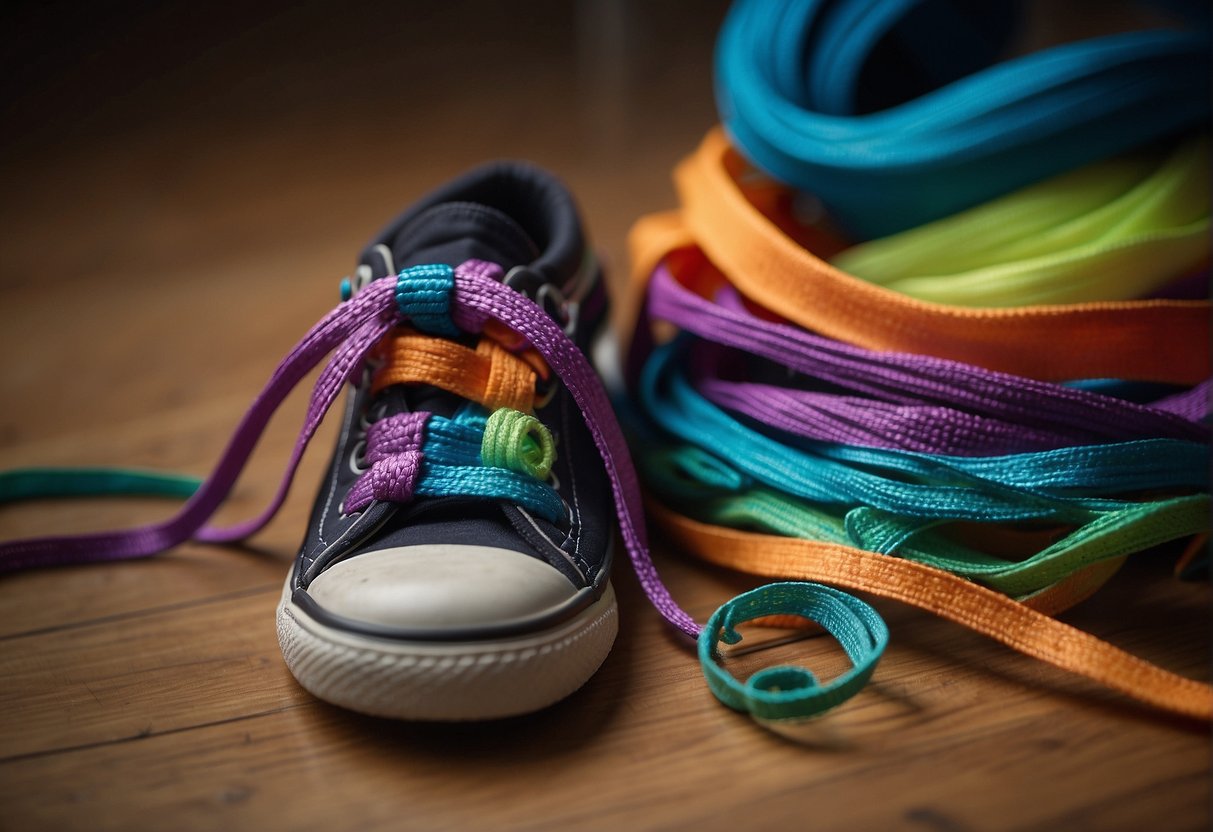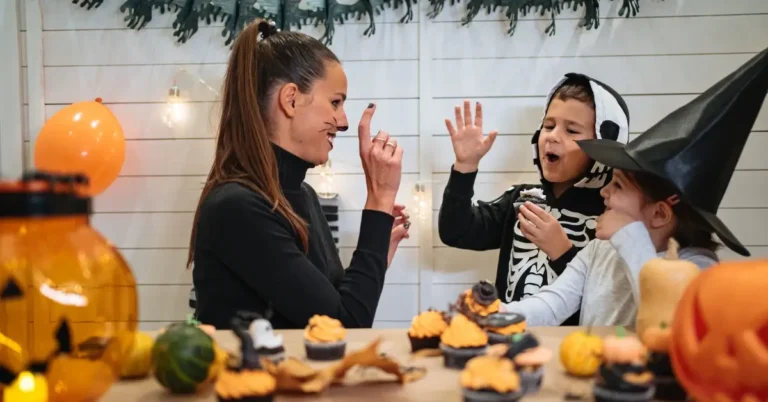Mastering the loops and knots, ‘What Age Do Kids Learn to Tie Shoes’ is a milestone in every child’s life. Our article helps you understand when and how to guide them through this learning process.
Understanding the Basics of Learning to Tie Shoes

Learning to tie shoes is a significant developmental milestone that involves fine motor skills and cognitive abilities. Your child’s success in this task is linked to their age and the progression of their motor skills and coordination.
Key Milestones in Motor Skill Development
Motor skills development is crucial for learning to tie shoes. Between ages 4 and 8, children typically reach the developmental milestones necessary for this skill. These milestones include:
- Fine Motor Skills: Your child’s ability to make movements using the small muscles in their hands and fingers improves.
- Hand-Eye Coordination: The ability to coordinate hand movement with what the eyes see is vital for handling laces.
- Hand Strength: Developing grip strength helps your child hold the laces firmly.
- In-Hand Manipulation: This refers to the ability to move objects within the hand, a skill necessary for the different steps of tying shoes.
The Role of Cognitive Abilities in Shoe Tying
Cognitive skills also play a part in your child’s learning to tie their shoes. Specific abilities that aid in shoe tying include:
- Understanding Sequences: Recognizing the order of actions required to tie a shoelace knot.
- Memory: Remembering the steps without needing to reference a guide each time.
- Problem-Solving: Adjusting techniques if the first try doesn’t result in a secure knot.
If your child is experiencing challenges with tying their shoes and they are beyond the expected age range, it might hint at a developmental delay. In such cases, seeking advice from a professional can provide tailored strategies to assist in their development.
Practical Techniques for Teaching Kids to Tie Their Shoes

Understanding how to effectively teach kids to tie their shoes can be transformative for their independence and fine motor skill development. With the right techniques and a bit of patience, this milestone can be an enjoyable learning process for both you and your child.
Step-by-Step Methods: Bunny Ears and Loop, Swoop, and Pull
Bunny Ears Technique:
- Create Two Loops: Begin by helping your child make two “bunny ears” or loops with the laces.
- Cross and Tie: Advise them to cross the loops over each other and pull one ear through the bottom to create a knot.
Loop, Swoop, and Pull Method:
- Form a Loop: First, fashion one loop, which will act as the “tree”.
- Swoop Around: Encourage your child to swoop the other lace around the “tree”.
- Pull Tight: Finally, instruct them to pull the lace through the “swoop” to secure the knot.
These two options from We Are Teachers provide a simple framework for young learners to follow, making shoe-tying less intimidating.
Incorporating Visual Aids and Hands-On Practice
- Utilize lacing cards or a wooden lacing board to enhance your child’s grip and coordination without the frustration of a floppy shoe.
- Demonstrate the techniques with oversized, brightly colored laces on a dummy shoe for easier visualization and understanding.
Hands-on practice facilitates muscle memory, ensuring that your child becomes comfortable with the motions of tying shoes.
Alternatives to Traditional Laces for Different Pace Learners
- Elastic Laces: Introduce elastic laces for children who may need more time to master conventional laces, as they offer ease of use and can mimic the motion without the need for perfect dexterity.
- No-Tie Options: For kids who struggle with fine motor skills, consider transitioning to no-tie lacing systems or shoes that utilize alternative closure methods such as Velcro® straps, which can serve as an intermediary step.
Understanding that each child learns at their own pace allows you to choose the method and tools that cater best to their needs and abilities.
Fostering a Supportive Learning Environment
When teaching your child to tie their shoes, creating a supportive learning environment is pivotal. It nurtures their confidence and patience, ensuring that they are comfortable and interested in mastering this essential milestone.
Cultivating Patience and Confidence Through Encouragement
Encouraging your child is not only about applauding their successes; it’s also about maintaining a positive tone when they’re struggling. Patience is key, so remember to give them attention and time. Reassure them that it’s okay to learn at their own pace, which helps build their confidence. For example, you can use language that emphasizes effort: “I see how hard you’re trying, keep it up!”
- Tip: Break down the steps into a sequence, like “Over, under, pull it tight, make a bow, loop the ends, and pull them through.”
Breaking the process down can help with their memory and sequencing skills, important for kindergarten levels and beyond.
Recognizing the Importance of Individual Learning Timelines
Every child develops language skills and visual memory at a different pace, and recognizing this is important. Pay attention to where your child shows interest and provide help accordingly. If developmental issues arise, address them early with compassionate support.
- Remember: Patience now can prevent frustration later.
Charting your child’s progress on milestones can be motivating for them and for you—it’s a visual reminder of their journey. Interest in learning is fueled by recognition and adjusting to their unique learning timeline.
Frequently Asked Questions
Tying shoes is a significant developmental milestone for your child that usually occurs between ages 4 and 7. Let’s answer some common questions to ensure you have the information needed to support your child through this learning phase.
At what age should children typically learn to tie their shoes?
Most children learn to tie their shoes between the ages of 4 and 7. This is a skill that depends greatly on the child’s fine motor skills development and readiness.
What are some effective methods to teach kids how to tie their shoes?
Using clear, step-by-step instructions and practicing with larger, more manageable laces or shoelace boards can be effective methods to teach kids how to tie their shoes.
Is it normal for a child to struggle with shoe-tying at age 7?
Yes, it’s normal for some children to struggle with shoe-tying at age 7. Children develop fine motor skills and hand-eye coordination at different rates, and some may need additional practice and support.
What milestones indicate a child is ready to learn shoe-tying?
Readiness for shoe-tying often comes with the ability to perform tasks that require fine motor dexterity and bilateral coordination, such as using scissors or coloring within the lines.
How can I help my older child who hasn’t learned to tie their shoes yet?
You can help by practicing together in a no-pressure environment, breaking down the steps, and encouraging your child. Patience and continuous positive reinforcement are key.
Are there alternative shoe fasteners appropriate for children who have difficulty with laces?
There are alternative fasteners available, like Velcro, elastic laces, and lock laces, which can be suitable for children who have difficulty with traditional laces. These options can help foster independence and confidence in children still developing their tying skills.






